Caesarstone in Milan: The First Five Years
Milan Design Week, held in April, is the most important design event worldwide. For one week, the city attracts the attention of the entire design world. The event includes the Salone del Mobile furniture exhibition, which takes place every year at the city's exhibition centre; hundreds of events, galleries, group design exhibitions, and design stands are located all over the city. In the past, the commercial fair was the focus of attention. Today, however, the events in the centre of the city have become significant as they serve as a platform for launching new collections, exposing young designers, and demonstrating the capabilities of the largest design companies in the world. The result is that many companies and designers choose to exhibit in the city centre instead of, or in addition to, the Salone del Mobile.
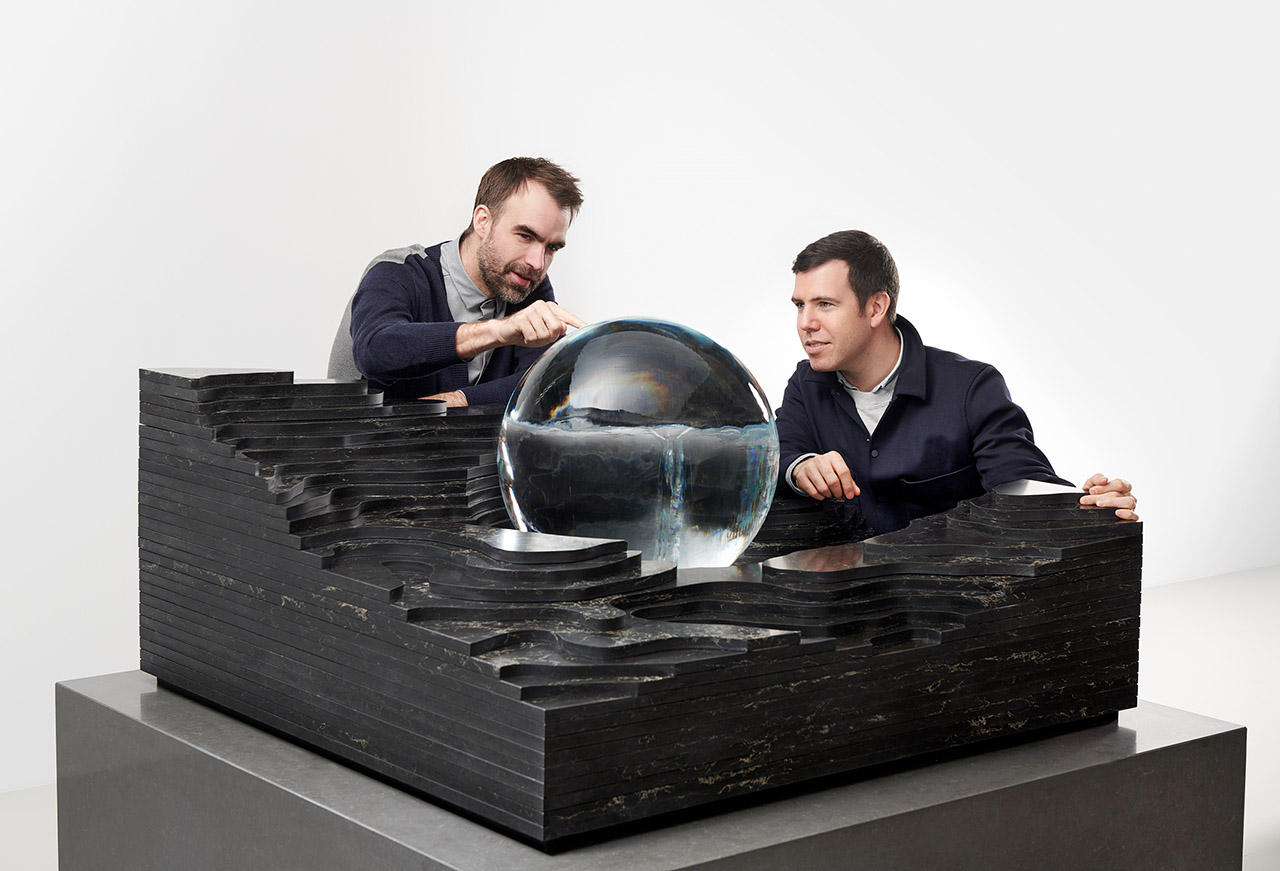
Snarkitecture, preparing for Milan 2018. Photo: Alex Lukey
Caesarstone has participated in Milan Design Week in the past five years, and presented impressive installations. Each year these installations were included in the prestigious list of must-see sites published by international design magazines such as Dezeen and Wallpaper, and leading newspapers such as the New York Times and British Telegraph.
This year, for the sixth time, Caesarstone will be participating in Milan Design Week and will present the installation "Altered States"--an international collaboration with the New York-based Snarkitecture studio. As every two years a significant part of Milan Design Week is dedicated to kitchens (EuroCucina), this year “Altered States” will examine the role of the island in the modern kitchen. The installation invites visitors to reconsider the primal elements of ice, water and steam and their connection to the everyday rituals of the kitchen island, such as cooking, gathering, entertaining and working.
Just before we reveal our sixth installation, here is a reminder of previous installations:

Stone Garden, Nendo Studio. Photo: Tom Mannion
2013 - Stone Garden
Caesarstone first presented at the Milan Design Week five years ago, in 2013, with Nendo studio that created “Stone Garden”. The installation consisted of 150 table-like surfaces, shaped as stones. The surfaces were created in seven sizes from nine different Caesarstone colours supported by simple metal rods. The table-like surfaces were anchored in place by overlapping parts that eliminated the need for reinforcement. The result was an illusion of a floating landscape inspired by the traditional Japanese stone garden, inviting the viewer to a short, seductive visit to the Orient.

Islands, Raw Edges. Photo: Tom Mannion
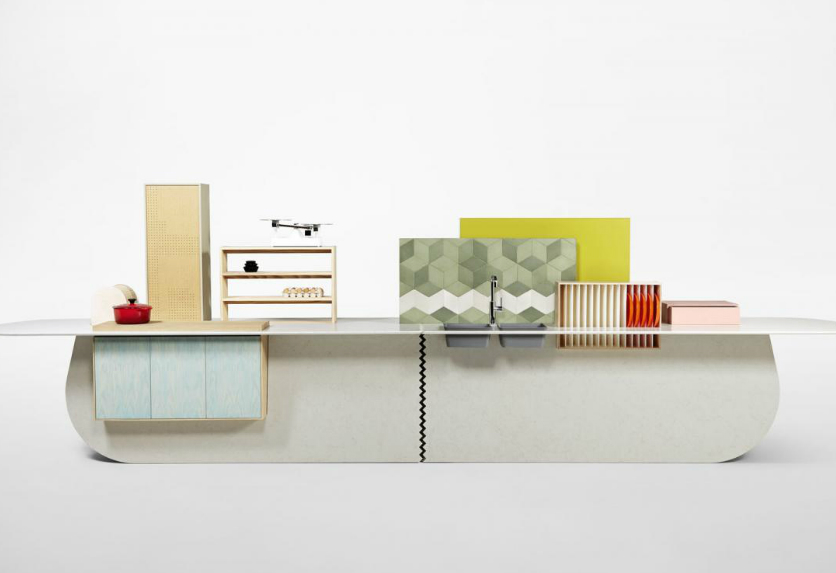
Islands, Raw Edges. Photo: Vicky Lam
2014 - Islands
A year later, in 2014, Raw Edges Studio (Yael Mer and Shay Alkalay) presented “Islands”, an installation that focused on an innovative conceptual view of storage, food and eating in the kitchen space. At the centre of the installation was an 18-metre kitchen island, along which, in dedicated niches, kitchen utensils, spice beds and even a life-sized lemon tree were integrated. The installation included additional focal points, such as an island in which a bathtub was incorporated to create a pampering bathroom environment, and a ping pong table made entirely of Caesarstone.

Movements, Philippe Malouin. Photo: Tom Mannion
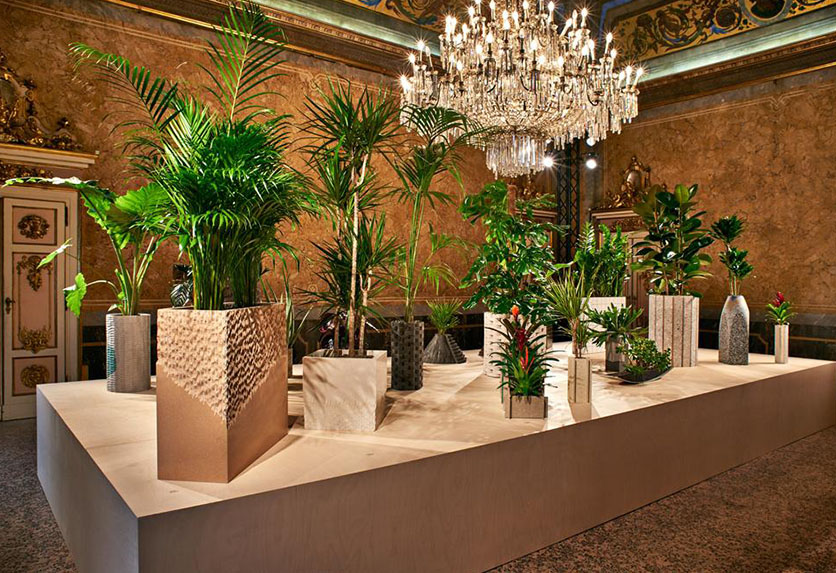
Movements, Philippe Malouin. Photo: Tom Mannion
2015 - Movements
“Movements”, designed by Philippe Malouin, in 2015, was composed of two parts and examined the unexpected use of Caesarstone surfaces. In the large hall of Palazzo Serbelloni--an impressive 18th-century Milanese palace--Malouin placed eight swings, made entirely of Caesarstone. In the adjacent room, about 20 hand-crafted plants were exhibited, continuing Malouin’s experimental process with various surfaces and processing techniques. Many media representatives crowned the installation as one of Milan's favourite projects, and it became one of the most photographed projects on Instagram during Milan Design Week that year.
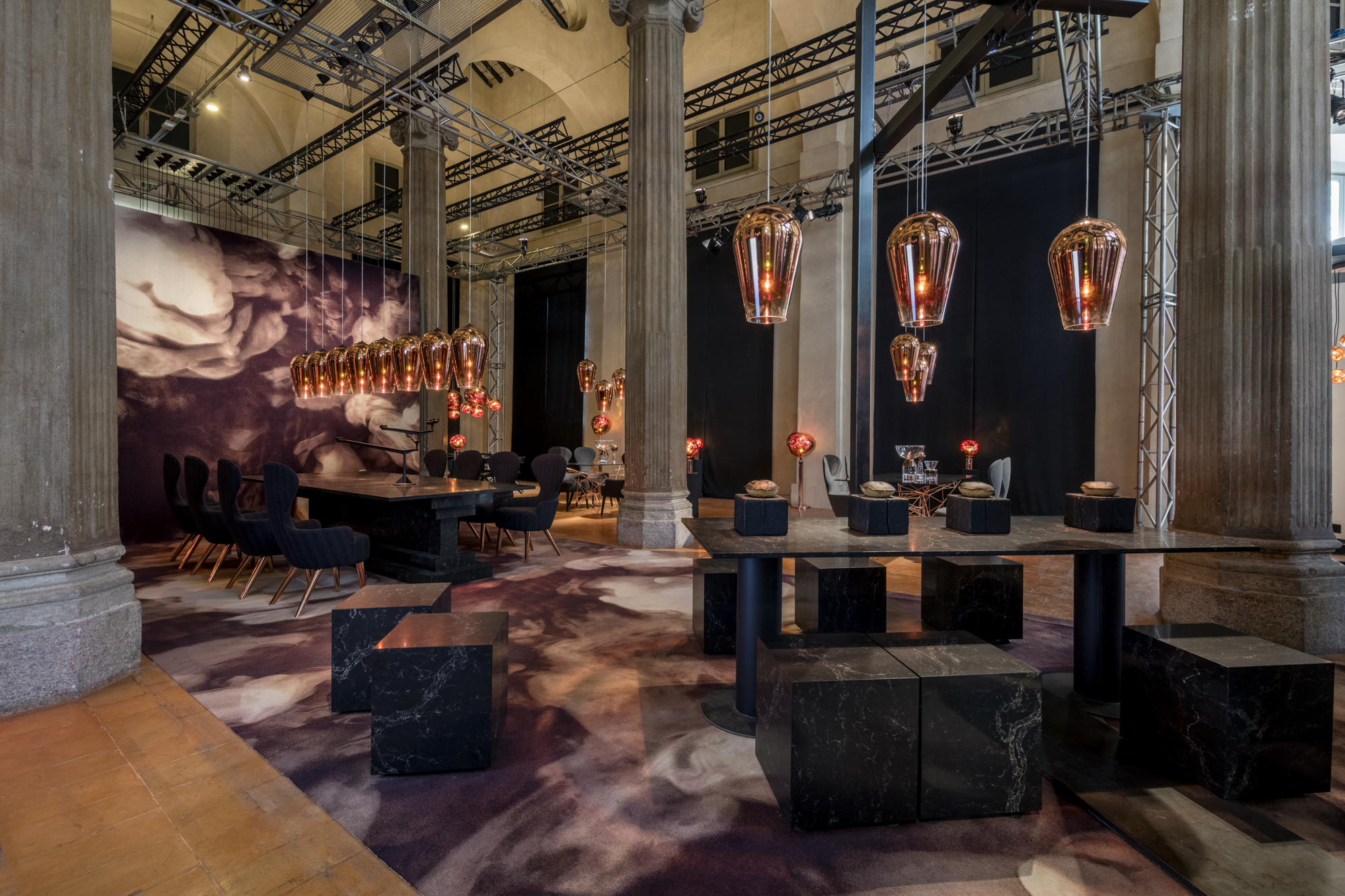
The Restaurant, Tom Dixon. Photo: Peer Lindgreen
2016 - The Restaurant
In 2016, Tom Dixon, one of the most leading and influential designers in the world, designed four concept kitchens inspired by the four elements: earth, air, water and fire. Dixon translated the elements into shapes, Caesarstone colours and complementary furniture from his collections. “The Restaurant”, presented at the MUBA Children's Museum in Milan, an historic Baroque site, offered a multi-sensory design and culinary experience.
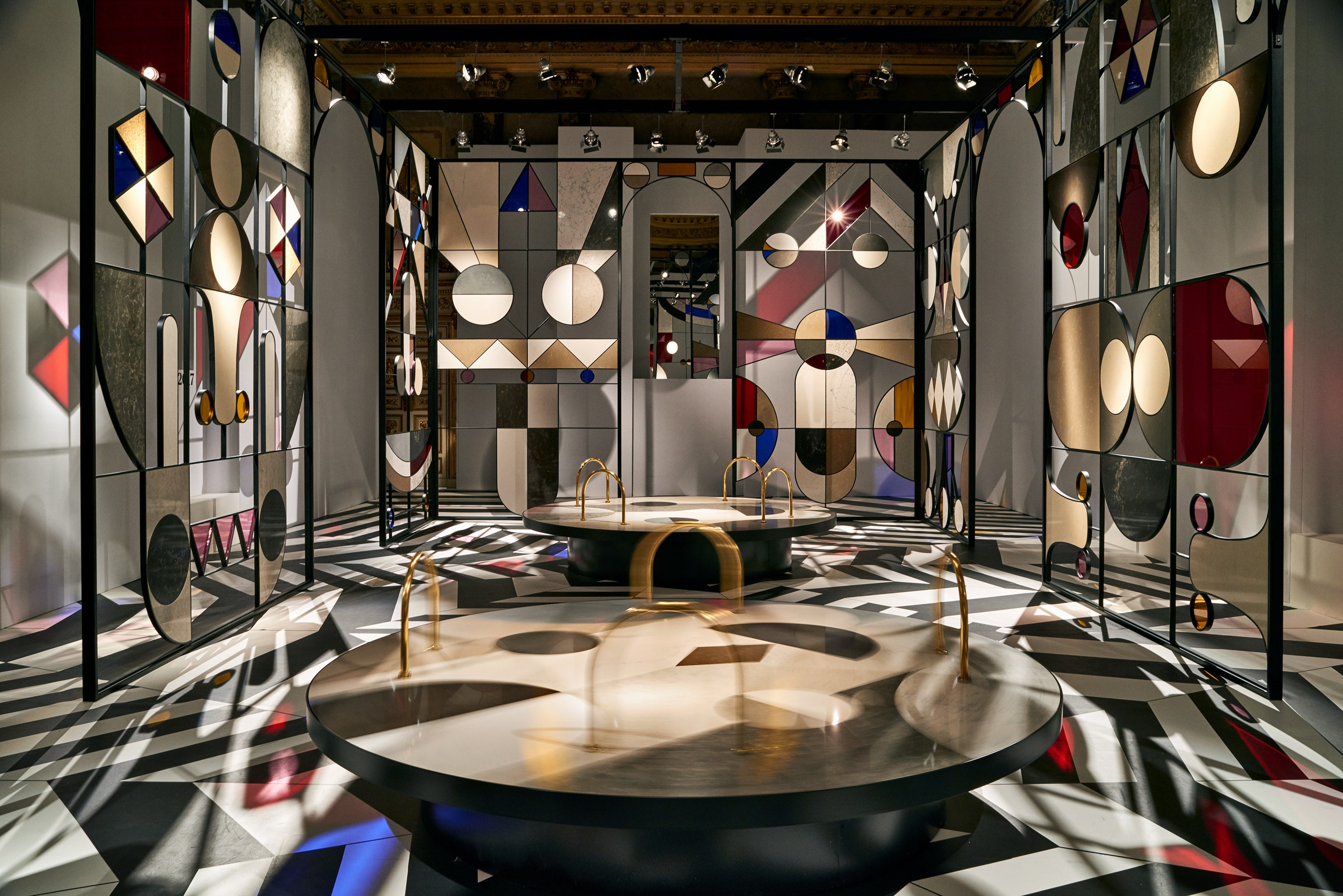
Stone Age Folk, Jaime Hayon. Photo: Tom Mannion
2017 - Stone Age Folk
Last year Caesarstone returned to the Palazzo Serbelloni with “Stone Age Folk”, a massive installation by Jaime Hayon. In the centre of the installation were two carousels made of Caesarstone, where visitors were invited to play. Hayon treated the Caesarstone surfaces as designers relate to precious stones: He installed the Caesarstone in 4-meter high metal frames, combining traditional stained glass techniques with innovative processing. The result included hypnotic combinations of colours, shapes and structures; old traditions and new technologies, as well as fantasy, folklore and humour, which characterize Hayon’s fantasy world.
Caesarstone's installations over the past five years have established the company as a leading force in the design world. Its annual designer collaboration programme with international designers continues to challenge architects and designers and inspire them to examine Caesarstone surfaces in a new light; the interpretation presented each year stretches anew the boundaries of the material.
"Altered States" will be displayed at Palazzo dell'Ufficio Elettorale di Porta Romana
Corso di Porta Romana 10, 20122, Milan
17-21 April, 10:00 – 19:00